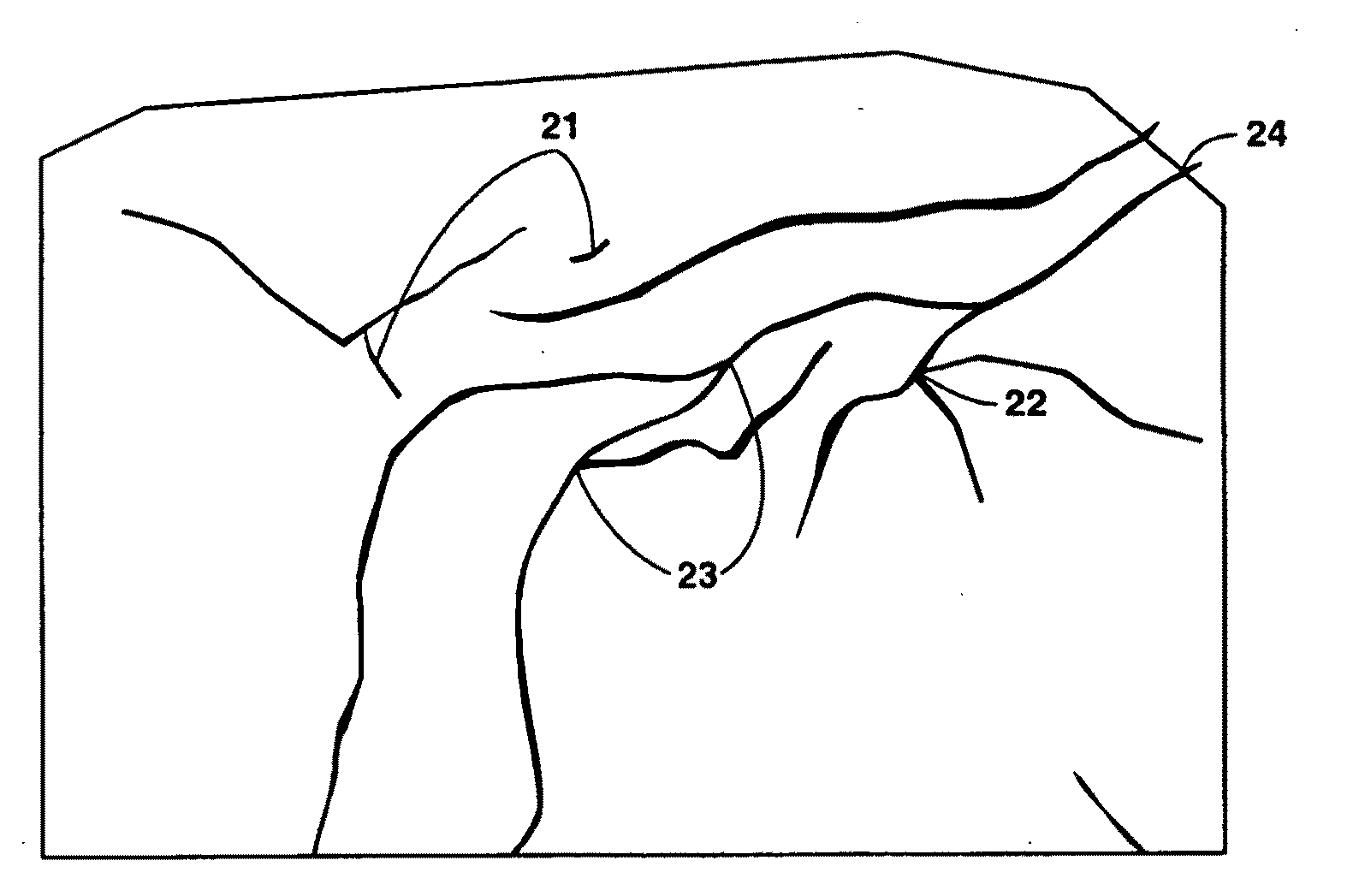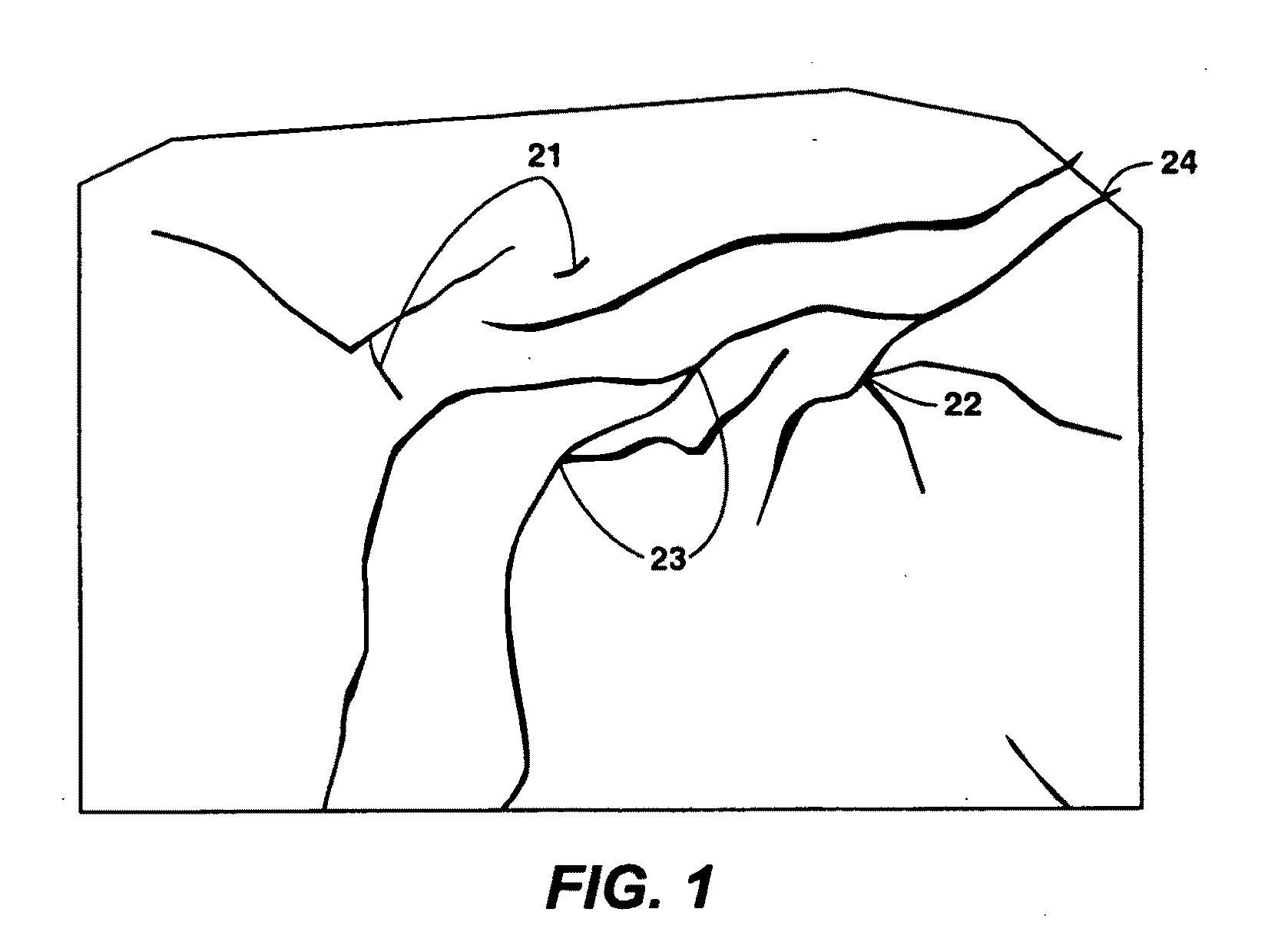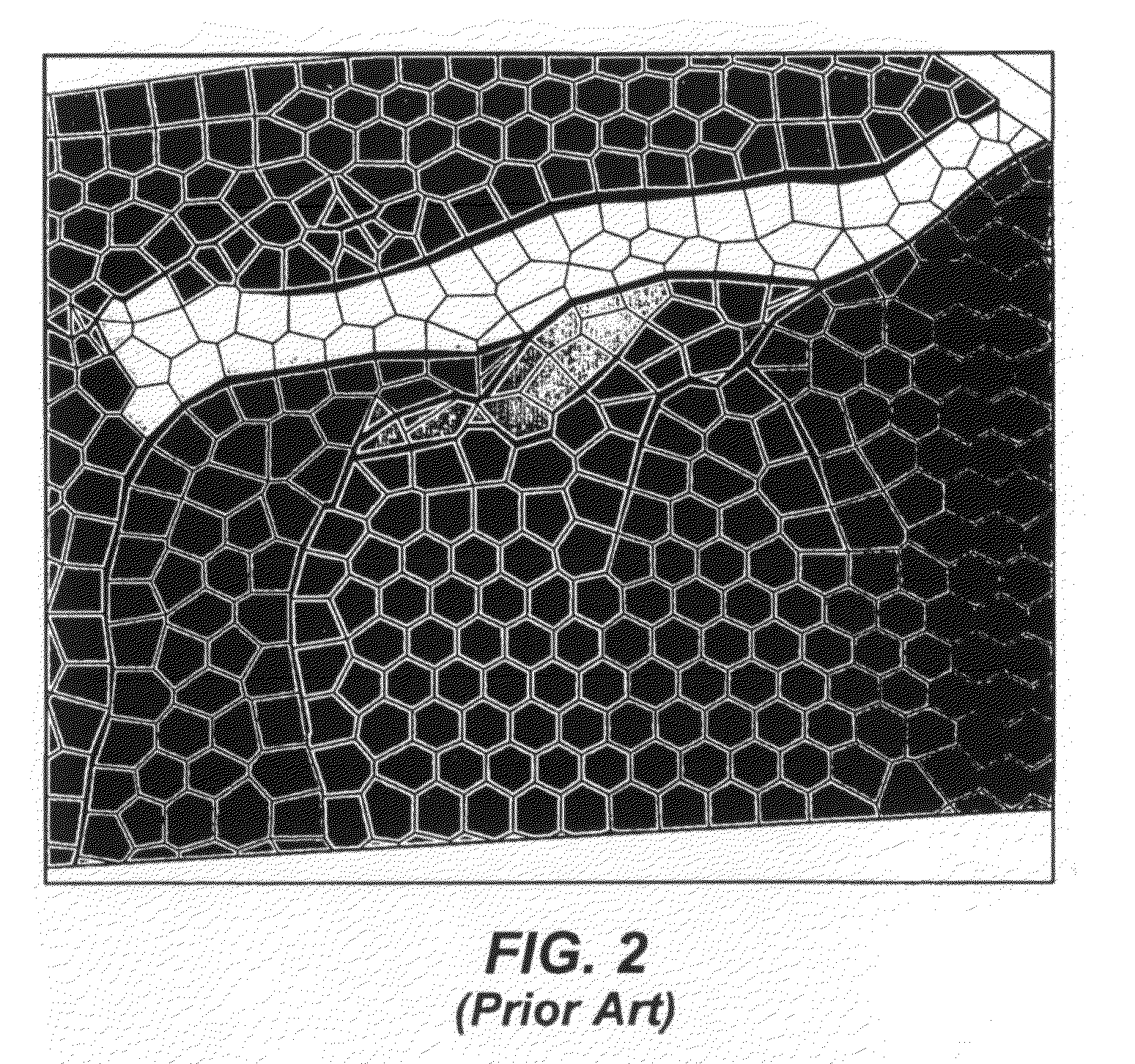Generation of Constrained Voronoi Grid In A Plane
a plane and voronoi grid technology, applied in the field of two-dimensional voronoi grid generation, can solve the problems of inability to accurately account for the effects of internal features, more specifically intersections of such internal features, numerical solutions using such a technique may be unstable and inaccurate, and flow calculations are less accurate, so as to improve the quality and accuracy of the final voronoi grid
- Summary
- Abstract
- Description
- Claims
- Application Information
AI Technical Summary
Benefits of technology
Problems solved by technology
Method used
Image
Examples
Embodiment Construction
[0030]This disclosure solves the problem of generating two-dimensional Voronoi grids in bounded regions with internal features, which are represented by continuous lines composed of one or more straight line segments (called polylines). In practice, it is desirable that the Voronoi grids match precisely the boundaries and polyline features (i.e., that the grid polygon (cell) borders exactly match the boundaries and features). In preferred embodiments, some or all of the steps are computer-implemented. If a computer is used, the software for carrying out any step in the method may reside on a computer-readable storage medium, which may or may not be a removable medium.
[0031]In the following description, the term “domain” is used to refer to the bounded region that is being gridded and modeled. A Delaunay triangulation is considered to be “constrained” if it resolves internal linear features and boundaries in a domain with the edges of the triangles. A Voronoi grid is considered to be...
PUM
 Login to View More
Login to View More Abstract
Description
Claims
Application Information
 Login to View More
Login to View More - R&D
- Intellectual Property
- Life Sciences
- Materials
- Tech Scout
- Unparalleled Data Quality
- Higher Quality Content
- 60% Fewer Hallucinations
Browse by: Latest US Patents, China's latest patents, Technical Efficacy Thesaurus, Application Domain, Technology Topic, Popular Technical Reports.
© 2025 PatSnap. All rights reserved.Legal|Privacy policy|Modern Slavery Act Transparency Statement|Sitemap|About US| Contact US: help@patsnap.com



